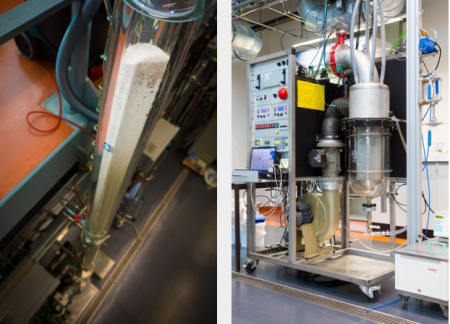November 4, 2017 – The University of Twente has designed a system that captures carbon dioxide (CO2) from the atmosphere and does it efficiently and cheaply. The harvested CO2 is then used to feed and accelerate algae growth for use as a feedstock, or as a storage medium for capturing surplus energy generated from solar and wind. For every 1,400 cubic meters of air the technology captures one kilogram (2.2 pounds) of CO2. The prototype device is equal in CO2 capture capacity to four mature trees.
How does the technology work?
The device uses particles that have the properties of sorbents, that is, material that can adsorb or absorb gases or liquids and act like a sieve. The particles flow through the device which drops the air pressure to attract CO2 molecules which are then collected. The particles then travel to a desorber that includes a heating source. The desorber when heated releases the CO2 molecules which are then contained. At the University the captured CO2 is being fed to reservoirs containing algae. The device’s net energy consumption is comparatively small. The University estimates that the energy costs to capture 1,000 kilograms (2,200 pounds) of CO2 is about 75 Euros which is deemed competitive in the current market.
One application for this technology, which has a fairly small form factor and can be placed almost anywhere to begin capturing CO2, is in the area of energy storage. CO2 from the air could be combined with hydrogen to produce a closed cycle natural gas heating system for businesses and homes. The CO2 could be injected into concrete to strengthen it, a technology innovation that has been tested in Canada. And deployed on a much larger scale, the technology could help reduce overall atmospheric CO2 with the captured gas being transported to permanent sequestration sites.















